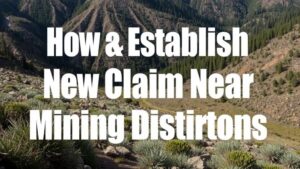The History of the Mogollon Mining District: Rich Gold and Silver Veins
The History of the Mogollon Mining District: Rich Gold and Silver Veins
The Mogollon Mining District, located in the southwestern United States, has become a significant chapter in the history of mining, particularly during the late 19th and early 20th centuries. This region is renowned for its rich deposits of gold and silver, which fueled economic growth and attracted miners and investors from across the country. This article explores the history, geology, and impact of the Mogollon Mining District while shedding light on its contribution to the broader mining industry.
Geological Foundations of the Mogollon Mining District
The geological frameworks of the Mogollon Mining District primarily consist of volcanic rocks formed during the late Tertiary period. regions mineral wealth arises from the presence of several ore deposits, which include:
- Epithermal veins of gold and silver
- Base metal deposits, including lead and zinc
- Volcanic activity that facilitated mineral deposition
These geological features mean that the Mogollon District offers diverse mineral resources. It is estimated that over 200 million ounces of silver and 3 million ounces of gold were extracted from the area since mining commenced.
Early Discovery and Mining Development
The mining history of the Mogollon District began in the late 1800s. In 1870, a group of prospectors first identified significant gold and silver deposits in the region. first major discovery occurred at a site known as the Mogollon Mine, which marked the beginning of an extensive mining boom. Significant milestones include:
- In 1886, the Hermosa and the Mogollon mines commenced operations, leading to increased accessibility of areas previously deemed unproductive.
- The establishment of the town of Mogollon in 1887, which quickly grew to serve the burgeoning mining population.
- The construction of the Mogollon Silver Mining Company that played a key role in establishing mining techniques and processing methods that were ahead of their time.
The rapid growth of mining activities led to the establishment of additional infrastructure, including roads, railways, and communication systems, all of which facilitated the transportation of ores to markets.
Challenges and Decline of Operations
While the Mogollon Mining District experienced periods of prosperity, it was not without challenges. Economic fluctuations, changes in mining techniques, and depletion of more accessible ore led to downturns. Key challenges included:
- Market fluctuations that impacted the price of silver and gold, notably during the silver crash in the late 1890s.
- Natural disasters, including floods and fires, which disrupted mining operations and led to significant economic losses.
- The introduction of stricter environmental regulations that eventually curtailed mining activities in the mid-20th century.
The Legacy of the Mogollon Mining District
Despite the eventual decline of mining activities in the Mogollon District, its legacy endures. The regions historical significance is marked by:
- An extensive contribution to the local economy, with estimates suggesting that mining activities generated millions of dollars in revenue during peak operations.
- The preservation of mining heritage through historical sites, museums, and local organizations dedicated to maintaining the history of mining in the area.
- The ongoing interest in the district for potential future mineral exploration as new extraction technologies evolve.
Today, the Mogollon Mining District serves as both a historical landmark and a focal point for studies related to mining practices, economic patterns, and the evolution of resources. The lessons learned from the districts rich history provide valuable insights into sustainable mining practices and responsible resource management.
Conclusion: Reflections and Forward Looking
The Mogollon Mining District presents a fascinating case study of the intersection between geology, economy, and human endeavor. It illustrates the significant impact mining had on shaping the regions history while also emphasizing the need for sustainable practices as interest in mining resurges. Understanding the complexities of this mining district remains essential for anyone involved in the mining industry or studying its historical facets.
As the demand for various minerals continues to rise globally, the legacy of the Mogollon Mining District may serve as a guide, highlighting both the benefits and challenges associated with mineral extraction.

